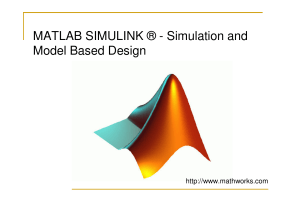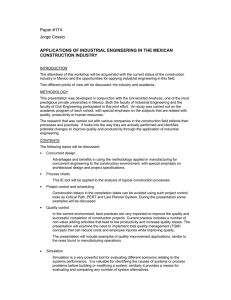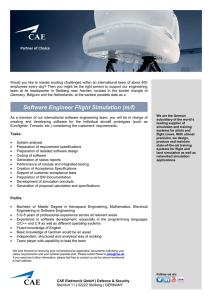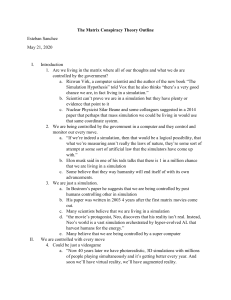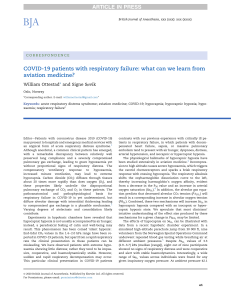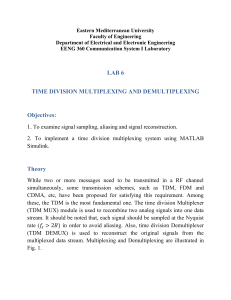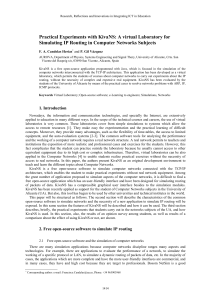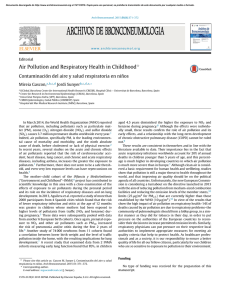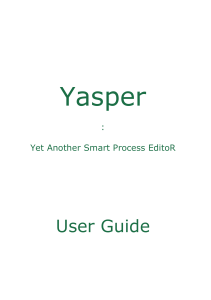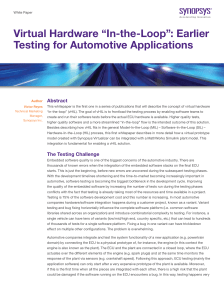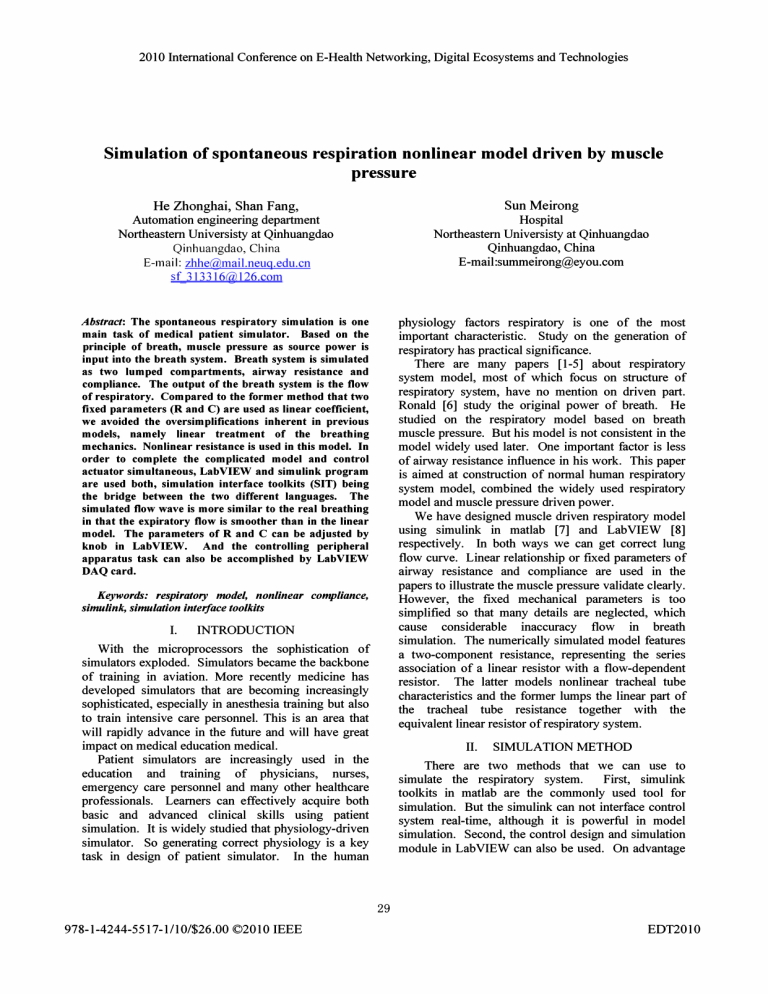
201O International Conference on E-Health Networking, Digital Ecosystems and Technologies Simulation of spontaneous respiration nonlinear model driven by muscle pressure He Zhonghai, Shan Fang, Sun Meirong Automation engineering department Northeastern Universisty at Qinhuangdao Hospital Northeastern Universisty at Qinhuangdao Qinhuangdao, China E-mail:summeirong@eyou.com Qinhuangdao, China E-mail: zhhe@mail.neug.edu.cn sf 313316@126.com Abstract: The spontaneous respiratory simulation is one main task of medical patient simulator. physiology factors respiratory is one of the most important characteristic. Study on the generation of respiratory has practical significance. There are many papers [1-5] about respiratory system model, most of which focus on structure of respiratory system, have no mention on driven part. Ronald [6] study the original power of breath. He studied on the respiratory model based on breath muscle pressure. But his model is not consistent in the model widely used later. One important factor is less of airway resistance influence in his work. This paper is aimed at construction of normal human respiratory system model, combined the widely used respiratory model and muscle pressure driven power. We have designed muscle driven respiratory model using simulink in matlab [7] and LabVIEW [8] respectively. In both ways we can get correct lung flow curve. Linear relationship or fixed parameters of airway resistance and compliance are used in the papers to illustrate the muscle pressure validate clearly. However, the fixed mechanical parameters is too simplified so that many details are neglected, which cause considerable inaccuracy flow in breath simulation. The numerically simulated model features a two-component resistance, representing the series association of a linear resistor with a flow-dependent resistor. The latter models nonlinear tracheal tube characteristics and the former lumps the linear part of the tracheal tube resistance together with the equivalent linear resistor of respiratory system. Based on the principle of breath, muscle pressure as source power is input into the breath system. Breath system is simulated as two lumped compartments, airway resistance and compliance. The output of the breath system is the flow of respiratory. Compared to the former method that two fixed parameters (Rand C) are used as linear coefficient, we avoided the oversimplifications inherent in previous models, namely linear treatment of the breathing mechanics. Nonlinear resistance is used in this model. In order to complete the complicated model and control actuator simultaneous, LabVIEW and simulink program are used both, simulation interface toolkits (SIT) being the bridge between the two different languages. The simulated flow wave is more similar to the real breathing in that the expiratory flow is smoother than in the linear model. The parameters of Rand C can be adjusted by knob in LabVIEW. And the controlling peripheral apparatus task can also be accomplished by LabVIEW DAQcard. Keywords: respiratory model, nonlinear compliance, simulink, simulation interface toolkits I. INTRODUCTION With the microprocessors the sophistication of simulators exploded. Simulators became the backbone of training in aviation. More recently medicine has developed simulators that are becoming increasingly sophisticated, especially in anesthesia training but also to train intensive care personnel. This is an area that will rapidly advance in the future and will have great impact on medical education medical. Patient simulators are increasingly used in the education and training of physicians, nurses, emergency care personnel and many other healthcare professionals. Learners can effectively acquire both basic and advanced clinical skills using patient simulation. It is widely studied that physiology-driven simulator. So generating correct physiology is a key task in design of patient simulator. In the human II. SIMULATION METHOD There are two methods that we can use to simulate the respiratory system. First, simulink toolkits in matlab are the commonly used tool for simulation. But the simulink can not interface control system real-time, although it is powerful in model simulation. Second, the control design and simulation module in LabVIEW can also be used. On advantage 29 978-1-4244-5517-1/10/$26.00 ©201O IEEE EDT2010 of LabVIEW's interface convenience, the model design by control design and simulation module can be used in real actuator control very easy. But the disadvantage of the module is it can not design model by block. If the model is somewhat complicate, the P = (Kl + K2IV(t �)v(t)+ E· V(t) The respiratory muscle pressure data from Ronald [6] in Fig. 1 is used as input of model. We construct the nonlinear model of breath system using simulink, muscle pressure cun.e with respiratory time 6 ,----,-----,---r--=-�--,_--_.--_,--� � :::J (/) (/) � 4 0.. � 0 (/) :::J E 2 co :8 o '---..L...-_"---__ ----'-_ o 0.5 -----"--- -----'-- 1.5 2 ----L- _ 2.5 1-- _---'---- 3 3.5 4 Fig.! Pressure waveform generated by respiratory muscle c SignalProbe SignalProbe O.Og'ab�lJflJ Fen Fig.2 Simulink model with muscle pressure as input and linear compliance nonlinear resistance varied with flow control design and simulation module will become powerless. Fortunately, the National Instruments Company realize the problem, they provide a tool, i.e., simulation interface toolkits, used to transform Simulink model to LabVIEW program. Combine the advantage of powerful model construction of simulink and interface convenience with peripheral actuator of LabVIEW and the bridge tool simulation interface toolkits (SIT), we design a program based on LabVIEW with SIT interface with simulation model generated by simulink. The program can control actuator and designs the simulation model complicate, which take advantage while eliminate disadvantage of the two languages. The equation of motion that represents the nonlinear model is [9]: the following block in Fig. 2 being the model, parameters were selected from [10]. The LabVIEW 8.6 and SIT 5.0 is used in the main program, DAQ is configured to output signal with PCI-6221M card equipped. The calculated flow wave is to be tracked by proportional flow valve. Fig.3 is part of front panel when SIT is used interface with simulink. FigA is the simulated flow using the aforementioned simulation condition: respiratory muscle used as input, nonlinear parameter of resistance that flow-dependent is used, and compliance is fix number.. III. CONCLUSION Compared with the flow wave generated with fixed resistance [7], the inspiratory flow part has little 30 change, but the expiratory flow parts are smoother. In general, the flow is more similar to the real curve. 0.3 Model Controls '" \ 0.5O. B I '" 0.20.1"" o / R HB�O (2) respiratory model is more complicated and precise with resistance flow-dependent parameterized, and the computed flow is even similar to real breath; (3) LabVIEW is used as the main program to interface with peripheral equipment, simulink is used as model construction program to cope with model complication, SIT is used to bridge the two program efficiently. The mentioned program method should be the optimum solution by our practice. .. References [1] A. F. M. Verbraak, 1. M. Bogaard, 1. E. W. Beneken, E.Hoorn, , "Serial lung model for simulation and parameter estimation in body plethysmography", Medical & biological engineering & computing, 1991, 29, pp 309-317. [2] Samir Mesic, Robert Babuska, Henk C. Hoogsteden, and Anton F. M. Verbraak, "Computer-controlled mechanical simulation of the artificially ventilated human respiratory system", IEEE transactions on biomedical engineering, 2003, 50(6), pp 731-743. O. 75 0.5 0.25 o Fig. 3 Part of front panel of LabVIEW program when simulation interface toolkits are used to embed simulink model V. V. Meka and J. H. van Oostrom, "Bellows-less lung system for the human patient simulator", Medical & biological engineering & computing, 2004, 42,pp 413-418. [3] [4] A. F. M. Verbraak, P. R. Rijnbeek, 1. E. W. Beneken, 1. M. Bogaard, et ai., "A new approach to mechanical simulation of lung behaviour: pressure-controlled and time-related piston movement", Medical & biological engineering & computing, 2000, 38, pp 82-89. [5] A. F. M. Verbraak, J. E. W. Beneken, J. M. Bogaard, and A. Versprille, "Computer-controlled mechanical lung model for application in pulmonary function studies", Medical & biological engineering & computing, 1995, 33,pp 776-783. [6] Ronald W. Jodat, James D. Horgen, and Ramon L. Lange, "Simulation of respiratory mechanics", Biophysical journal, 1966, 6, pp 733-785. [7] He Zhonghai, "Simulation study on human respiratory system based on muscle pressure driven", International conference on engineering computation, Hong Kong: IEEE computer society, 2009, pp 33-35. [8] He Zhonghai, Shan Fang, "Adjustable parameters respiratory flow generation simulation method realized by LabVIEW", Third international symposium on intelligent information technology application, Nanchang, China: IEEE computer society, 2009, pp299301. [9] Frederico C. Jandre, Alysson Roncally Silva Carvalho,Alexandre Visintainer Pino, Antonio Giannella-Neto, "Effects of filtering and delays on the estimates of a nonlinear respiratory mechanics model", Respiratory Physiology & Neurobiology, 2005, 148, pp 309-314. Fig.4 Simulation result of flow using muscle pressure as input and nonlinear airway resistance IV. DISCUSSION We have tried the two foregoing methods both respectively [7-8]. But we can not realize the simulation construction and output simulated result by one program. If the model is simple, the control design and simulation module in LabVIEW can competent for the task, as we have done in previous work. With the complicate of respiratory model, by practice, we conclude that the combination of simulink and LabVIEW bridged by simulation interface toolkits is the optimum option. There are three main key points in the paper: (1) the respiratory muscle pressure is used as system input, which is accorded with spontaneous breath principle; [10] Tang Yuansheng, Zhang Xiuzhen, Han diancun, Parameters and concept of human medical, Jinan,China: Jinan publishing house, 1995. "in Chinese" 31
